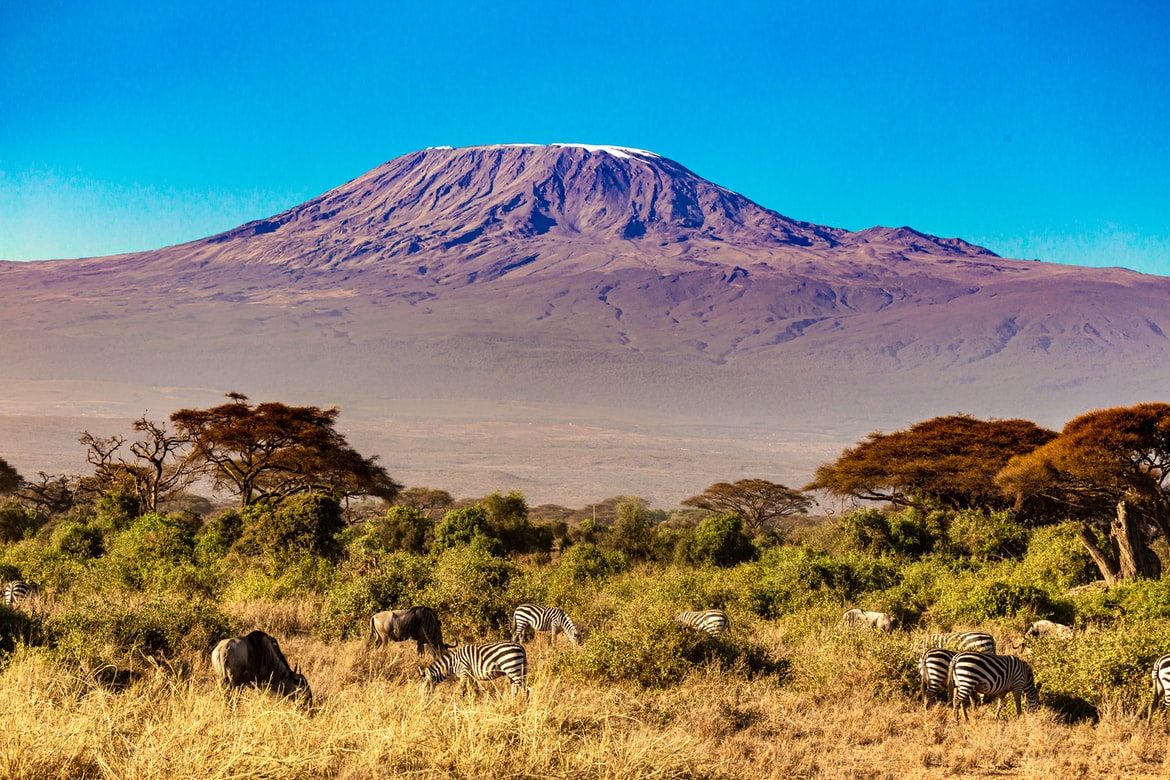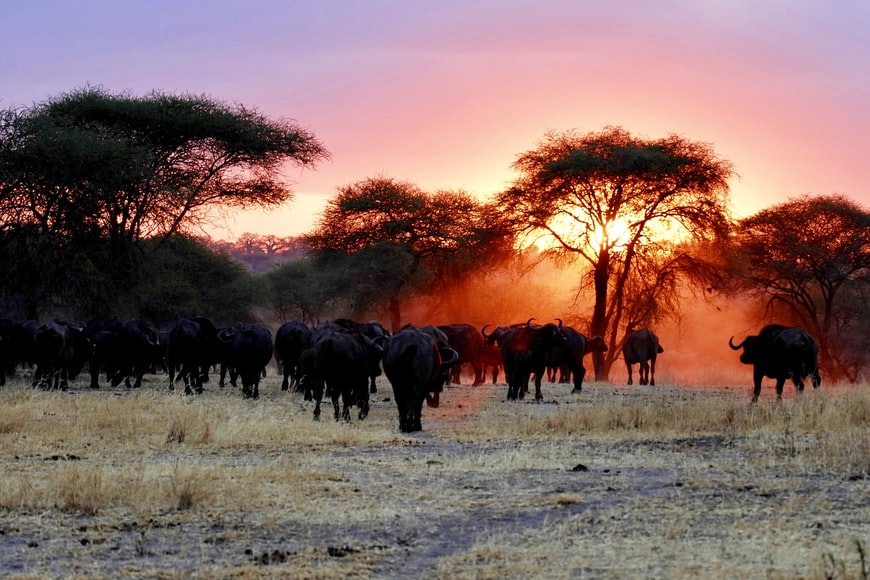Tanzania: Kilimanjaro, safaris, national parks and nature everywhere.

Tanzania is a country known mainly for safaris, but it has much more to offer, such as Africa's highest mountain, vibrant cities full of history and even island paradises. Here are some ideas for visiting the country, including: the most interesting national parks, tips on how to climb Kilimanjaro, or the process of visa application TanzaniaThe entry procedure is compulsory for entry into the country.
On safari in one of the national parks
Tanzania is a perfect destination for those who want to go on safari. The country has several places for this purpose, of which the Serengeti National Park is the best known. With a bit of luck, it's the place to see the animals that belong to the group known as the 'Big Five': elephants, lions, leopards, rhinos and buffaloes. Another famous safari spot in Tanzania is the Ngorongoro Crater. In the south of the country, there are a number of lesser-known national parks that are also worth a visit. For example, the Selous Game ReserveRuaha National Park, one of the largest game reserves in the world, or Ruaha National Park, the largest national park in Tanzania in terms of area. This national park is home to an enormous amount of wildlife, such as lions, elephants, wild dogs, leopards, cheetahs, giraffes, jackals, zebras and large herds of buffalo. In the north of Tanzania is Lake Manyara National Park, where you can see elephants and several species of birds, including flamingos. In the northeast of the country are Arusha National Park, Kilimanjaro National Park, Mkomazi National Park and Tsavo National Park.

Climbing Kilimanjaro
There are many who wish to climb the "roof of Africa" and thus conquer one of the seven summits. The Mount Kilimanjaro is located in northeastern Tanzania, is 5895 metres high and consists of 3 dormant volcanoes: Shira, Mawenzi and Kibo. It is on the latter that Kilimanjaro's famous peak, Uhuru Peak, is located. Although it is often considered one of the easiest climbs in this group, its difficulty cannot be underestimated.
The climb can take between 5 and 9 days, depending on acclimatisation. Normally, if you climb Kilimanjaro in 9 days you are more likely to reach the summit, whereas if you do it in only 5 days you may suffer from nausea halfway up. Therefore, to avoid risks and to acclimatise properly, it is recommended not to choose the fastest route to the summit. An important thing to bear in mind is that you cannot climb Kilimanjaro alone or without a guide, no matter how experienced you are. According to Tanzanian law, you must climb with at least two porters and a guide.
If you are wondering what is the best time to climb Kilimanjaro, you should know that it can be done at any time of the year. Normally it is recommended from January to March (to find snow on the summit) and from June to October (drier season but with more tourists). However, it is also possible to climb in the low season, between March, April and November, when there is more rain but fewer people. If you do it during this time of year, be aware that the slopes can be muddy, so the Rongai route is recommended.
Kilimanjaro can be climbed via six different routes: Lemosho, Umbwe, Machame, the Northern Circuit, Marangu and the aforementioned Rongai. Although there is also the Shira route, since the Lemosho route was created for better acclimatisation it is rarely used. Although many believe that Marangu is the best route up Kilimanjaro, the huts on this route are poorly equipped and it may be better to share a tent.
Cities and beaches of interest
Although Tanzania is mainly known for its safaris and the highest mountain in Africa, there are also several interesting cities to visit if you have enough time and want to do some sightseeing. The town of Arusha is known as the safari capital, as it is the ideal starting point for those who want to go on safari in one of the national parks mentioned above. Another town
interesting is Dar es Salaam, the largest in Tanzania. For those who want to relax after a Kilimanjaro climb and/or a few days on safari, the island of Zanzibar is the ideal choice. As well as enjoying the beautiful white sandy beaches and crystal clear water, a stay in this area should include a visit to Stone Town, the historic centre of Zanzibar City, which is also the capital of the island of the same name.
Visa Tanzania
As mentioned above, travellers wishing to visit Tanzania, whether on safari, to climb Kilimanjaro, explore its cities or relax on one of Zanzibar's beautiful beaches, need to apply for a visa. If you meet all the requirements for a Tanzania visa, which is usually the case, you can easily apply for a visa online. One of the conditions is
the traveller's passport must be valid for at least 6 months and must contain at least one blank page. The visa allows travel to Tanzania once for a maximum stay of 30 days. Those wishing to visit both mainland Tanzania and Zanzibar can do so on a single Tanzania visa;
No specific visa is required for travel to the islands of the archipelago.
Don't miss any adventure in the Pyrenees!
